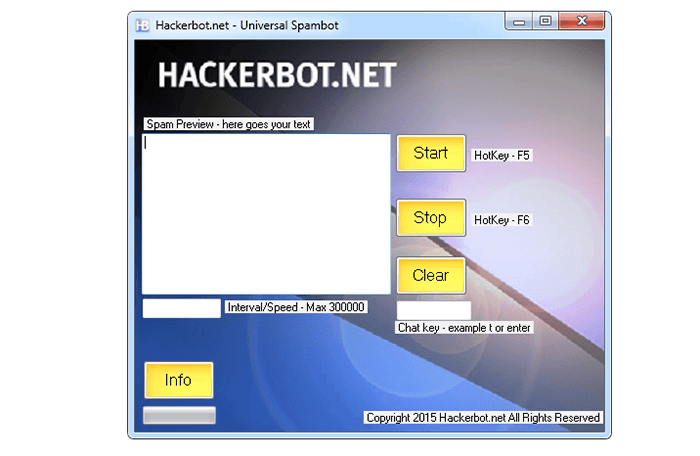

An immediate effect of this selective measure is that you’re only getting relevant leads but, by extension, you’re also reducing the amount of spam that could come from other countries. So, for example, if you’re a small local business and you’re only interested in getting leads from the UK, you can simply disable access to the form to users from other countries. If you don’t know what it does, geo-fencing is a feature that restricts access to your online forms based on the user’s physical location.
ONLINE SPAM BOT MANUAL
Also, they’re particularly discouraging for manual spammers (people hired by companies to send messages for link juice) because they’d much rather send unwanted information all at once than go through a multi-step process.Īlthough its primary purpose isn’t to limit spam, to begin with, geo-fencing can have this benefit too. However, multi-step forms also reduce the risk of spam because they’re less attackable by bots. You may be familiar with the benefits of multi-step forms from a marketing perspective: they’re much more user-friendly compared to single-step forms, they’re less intimidating and increase the chances of obtaining quality leads.

Unlike single-step forms, which display all the fields in one go, multi-step forms split them into several steps, so that users answer one question at a time. By implementing these measures, you can discourage malicious entities from sending abusive data, regain control over your online forms, and gradually increase the quality of your leads. According to Teiss data, 23% of companies in the UK receive more than 500 suspicious emails each week, many of which arrive via online forms.ĭealing with a lot of spam from your online forms can make you feel powerless, but, fortunately, there are ways to reduce it. Whether it’s manual or done by bots, spam wastes your time and prevents you from accessing those high-quality leads that could grow your business. However, seeing that your lead contact form has been blown up with hundreds of spam submissions can be incredibly frustrating. They should be part of any robust digital marketing strategy, and they’re one of the best ways to gather quality data about consumer behaviour and preferences. Online forms are meant to help you nurture leads, boost engagement, and increase conversions.

Change the name of your form action scripts periodically - But just like the form pages, you should periodically change the name of any scripts you point to in the actionattribute of your forms.They get a 404 and I see that in my stats, so I know I shouldn't use that page again. I have a couple of form pages that have not been active in over five years that still get periodic hits by spammers. And there are many spam businesses where all they do is sell lists of URLs to forms where spammers can write their posts. Move your form pages periodically - Even if you're not using a standard file name for your comments or form fields, spammers can find them if they are linked on your site.By changing the file name to something else, you can block these automated spambots. If the comment file (usually called comments.php) exists on your site, spammers can and will use it to post spam comments to your blog. This is why you will sometimes see comment spam even if you have comments removed from your template. Don't use standard URLs for forms - Most comment spam is automated, and they go out to WordPress and other blog sites and just attack the form directly.


 0 kommentar(er)
0 kommentar(er)
